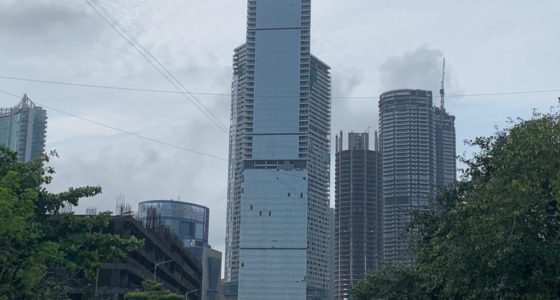Mumbai, October 2024 — The Mumbai Metropolitan Region (MMR) housing market experienced notable fluctuations in both new launches and sales in the third quarter of 2024, reflecting broader trends in the Indian real estate sector. According to recent data, MMR accounted for a significant 32% share of new launches among the top seven cities in the country, with approximately 29,600 units introduced. However, this marks an 18% year-over-year decline and a staggering 33% quarter-over-quarter drop, indicating a potential slowdown in market activity.
Launches: A Significant Decline
The Q3 2024 figures reveal that Mumbai emerged as the frontrunner in new housing launches, commanding a substantial 74% share of MMR’s total launches. The cities of Navi Mumbai and Thane followed with 14% and 12%, respectively. This concentration underscores Mumbai’s pivotal role in the regional housing market.
Within the launched units, the affordable and mid-end segments represented a combined 58%, with 30% attributed to affordable housing and 28% to mid-range developments. This trend suggests that despite the overall decline in launches, there remains a focus on catering to the demands of budget-conscious buyers.
Sales: A Mixed Bag
In terms of sales, the MMR recorded approximately 36,200 units sold in Q3 2024, representing a robust 34% of the national sales volume. However, this figure reflects a 13% decline compared to the previous quarter and a 6% decrease year-over-year, raising concerns about sustained demand in the market.
Mumbai’s contribution to MMR sales was substantial, accounting for 69% of the region’s total sales volume. The Peripheral Central Suburbs were particularly active, capturing 39% of the sales, while the Peripheral Western Suburbs followed with a 22% share. This indicates a shift in buyer preference towards suburban areas, where housing options may be more affordable and spacious compared to the densely populated city center.
Market Insights
The drop in both new launches and sales could be attributed to various factors, including rising interest rates, economic uncertainties, and changing buyer preferences. Despite the downturn, the continued strong demand for affordable and mid-range housing suggests that there remains a robust market segment, with many buyers actively seeking options within these price ranges.
Real estate experts suggest that developers may need to recalibrate their strategies to adapt to the current market conditions. Focus on customer-centric projects, flexible payment plans, and enhanced amenities could be pivotal in driving sales and sustaining interest in new launches.
Conclusion
As the MMR housing market navigates these fluctuations, stakeholders will need to closely monitor trends and adjust their approaches accordingly. With a significant share of national sales and a continued emphasis on affordable housing, the MMR remains a critical barometer for the overall health of India’s real estate landscape. Looking ahead, the market’s recovery will depend on a combination of strategic development, economic stability, and responsive policymaking to foster buyer confidence.
Also Read: Toll Fees Waiver for LMVs, ₹250 Crore, nothing in front of relief for MMR citizens









